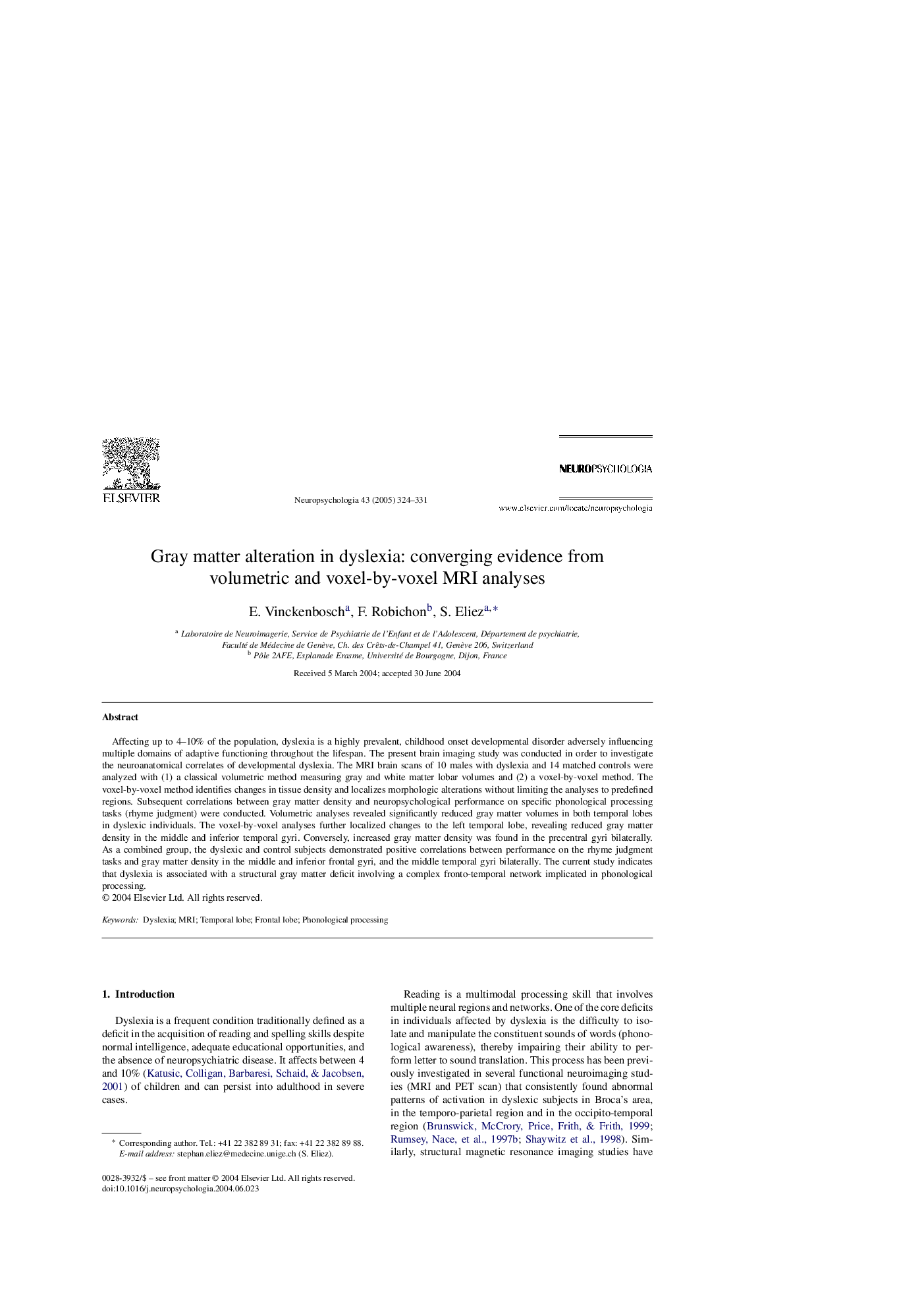| Article ID | Journal | Published Year | Pages | File Type |
|---|---|---|---|---|
| 10467633 | Neuropsychologia | 2005 | 8 Pages |
Abstract
Affecting up to 4-10% of the population, dyslexia is a highly prevalent, childhood onset developmental disorder adversely influencing multiple domains of adaptive functioning throughout the lifespan. The present brain imaging study was conducted in order to investigate the neuroanatomical correlates of developmental dyslexia. The MRI brain scans of 10 males with dyslexia and 14 matched controls were analyzed with (1) a classical volumetric method measuring gray and white matter lobar volumes and (2) a voxel-by-voxel method. The voxel-by-voxel method identifies changes in tissue density and localizes morphologic alterations without limiting the analyses to predefined regions. Subsequent correlations between gray matter density and neuropsychological performance on specific phonological processing tasks (rhyme judgment) were conducted. Volumetric analyses revealed significantly reduced gray matter volumes in both temporal lobes in dyslexic individuals. The voxel-by-voxel analyses further localized changes to the left temporal lobe, revealing reduced gray matter density in the middle and inferior temporal gyri. Conversely, increased gray matter density was found in the precentral gyri bilaterally. As a combined group, the dyslexic and control subjects demonstrated positive correlations between performance on the rhyme judgment tasks and gray matter density in the middle and inferior frontal gyri, and the middle temporal gyri bilaterally. The current study indicates that dyslexia is associated with a structural gray matter deficit involving a complex fronto-temporal network implicated in phonological processing.
Related Topics
Life Sciences
Neuroscience
Behavioral Neuroscience
Authors
E. Vinckenbosch, F. Robichon, S. Eliez,
